Ferrari Corso Pilota Classiche – classic experience like no other
If you chalk up a couple of decades as a motoring journalist, occasional opportunities present themselves to drive classic – and often precious – models, sourced from the museums and collections of hallowed carmakers.
However, what doesn’t happen very often is for a storied marque to throw the toybox open and say: “Here they are. Cane them as hard as you like on our private test track.”
I might be paraphrasing a little, but this is essentially what occurred when Ferrari recently extended an invitation to the Corso Pilota Classiche program, which is open for its customers to participate in – at a not-insubstantial price, of course.
The program includes deep dive into Ferrari’s classic restoration division, but what has me salivating is the prospect of driving some of my childhood poster cars – the 308 GTB and GTS, 550 Maranello and gorgeous 365 GTB/4 (better known as the Daytona) – in anger at the Fiorano test track.
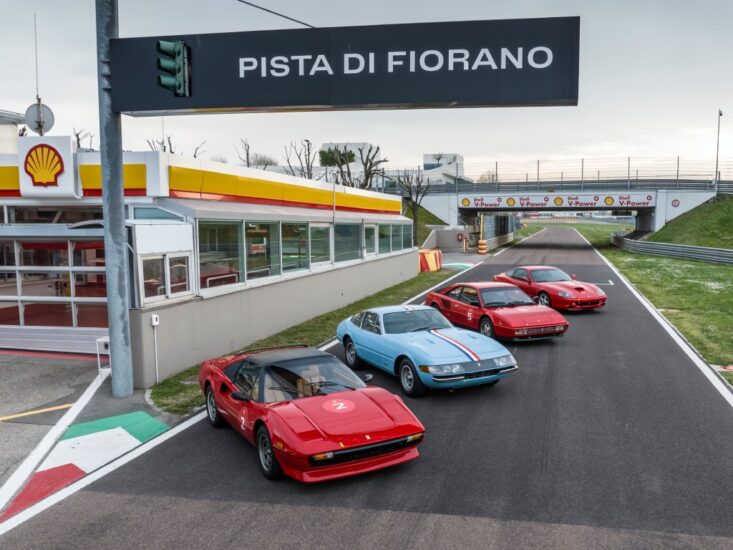
Modern supercars make it all too easy with their flappy-paddle sequential gearboxes, armoury of electronic nannies and virtually the same mod-cons as a limo.
But driving these old Prancing Horse gems would require tapping into nowadays little-used skills such as heel-toeing, double-declutching, working a gated-shift manual gearbox and wrestling with steering devoid of any assistance. In short, real driving.
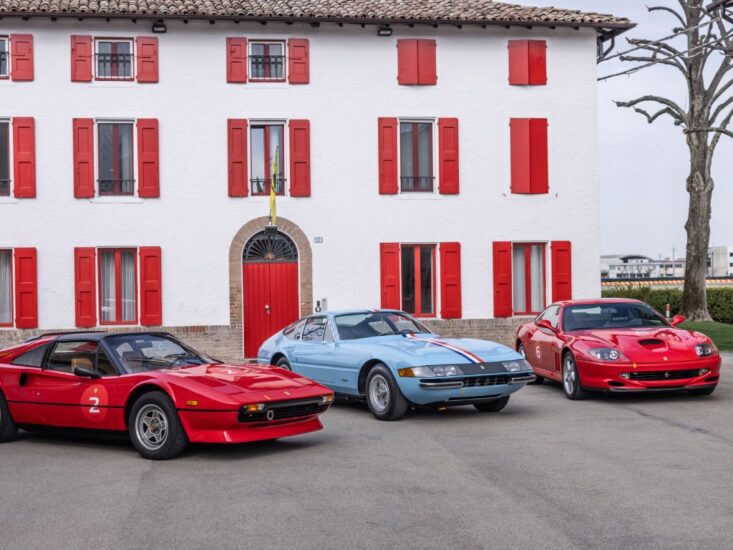
The classic Ferraris we’ll be driving today are clean, very well-maintained cars, but they’re not concours examples. Their job description is to be driven hard – something that I’d be only too happy to do.
Ferrari 365 GTB/4 Daytona (1968-1973)
The 365 GTB/4 is nowadays almost a mythical entity as it’s quite likely most people will never lay their eyes on one in their entire lifetime – unless they’re die-hard Ferraristi or regulars at concours events.
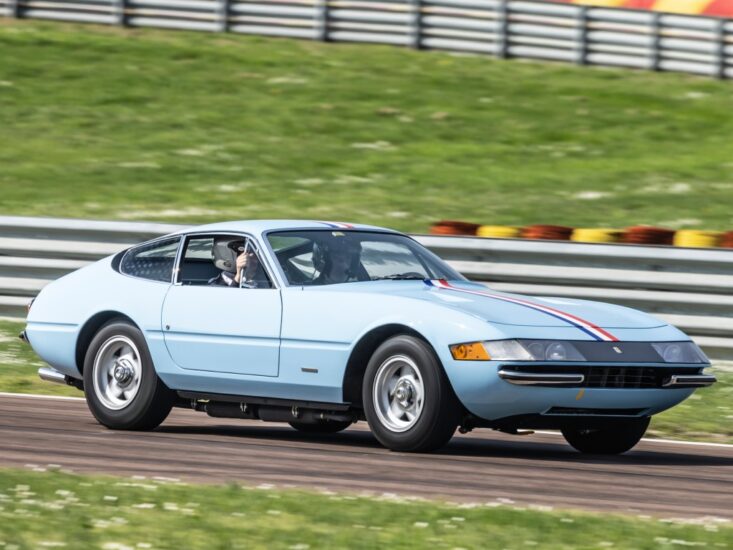
Ferrari produced just 1,284 units of the 365 GTB/4 over a five-year production run, plus 122 GTS/4 soft-topped Spiders, yet the car left a larger imprint on the automotive landscape than the meagre build numbers would imply.
Following in the wheeltracks of the 275 GTB/4, the newcomer – dubbed the “Daytona” by the motoring media following Ferrari’s 1-2-3 finish in the 1967 24 Hours of Daytona – was a sensation when it was revealed.
An abrupt visual departure from its classically styled 275 predecessor, the pointy-nosed Daytona’s striking aesthetics included twin headlights housed behind a raked-back plexiglass cover and a fastback roofline that culminated in a sharply truncated derriere. Due to US safety regulations, from 1971 onwards, the Daytona sported pop-up headlights in lieu of the original arrangement.
The Colombo V12 that powered the 275 GTB/4 was upsized to 4.4 litres for the Daytona – a little over 365cc per cylinder, and hence the model designation. The “GTB” part of the nomenclature corresponded to Gran Turismo Berlinetta, while the “4” on the end denoted the number of camshafts.
Fed by no less than six downdraft Weber carburettors, the V12 was good for 352hp at 7,500rpm and 431Nm at 5,500rpm, yielding a claimed top speed of 280km/h and 0-100km/h sprint of under 6sec.
The engine was mated to a five-speed manual gearbox mounted at the rear axle to make for better weight distribution. Measured against today’s grand tourers, the Daytona was a genuine featherweight at just 1,200kg without fluids.
A lightweight it may have been, but that certainly doesn’t translate to how the Daytona drives.
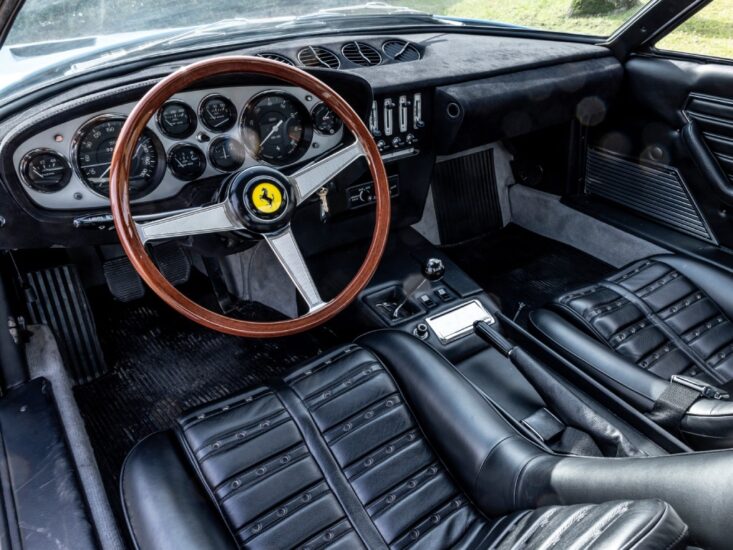
Venturing out onto the Fiorano track in a lovely looking 1969 example – resplendent in baby-blue paintwork with a red/white/dark blue stripe down the middle – a wrestle ensues with the large wooden-rimmed steering wheel to get the car turned through the succession of corners that make up the 2.997km circuit.
Not only is steering effort extremely high, so too is the force required to ram the gated gearshift into the desired ratio. It’s just as well the 4.4-litre is immensely torquey and tractable, enabling the car to trundle around most of the circuit in third gear.
Belying its lithe lines, the Daytona feels a bit like an oil tanker to commandeer as there’s a yawning lag between turning the steering wheel and the car actually changing direction. An abundance of body roll adds to the perception that you’re at sea.
It doesn’t help that the driving position is far from ideal, with the seats resembling laid-back deckchairs. On the plus side, the V12 sounds glorious and the pure exhilaration of driving such an iconic and rare vehicle adds to the sense of occasion.
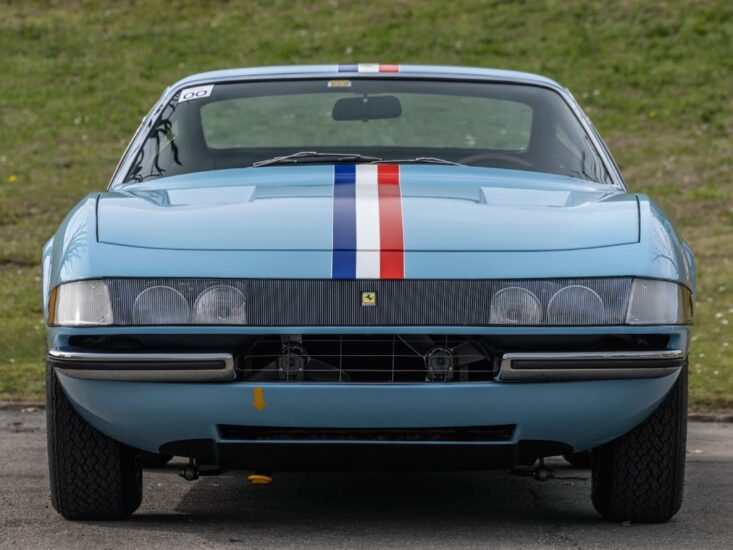
The Daytona has built up cult status over the years, thanks partly to exploits such as the car’s victory in the 1971 Cannonball Baker Sea-to-Shining-Sea Memorial Trophy Dash.
Dan Gurney and Brock Yates won the cross-USA sprint at an average speed of 80.1 miles per hour (129 km/h), completing the distance from New York City to Los Angeles – 2,876 miles (4,628 km) – in 35 hours 54 minutes. Gurney was later quoted as saying, “We never once exceeded 175 miles per hour.”
There was also, of course, a starring role for the Daytona in the first two seasons of Miami Vice in the 1980s, although the black Spider that appeared in the series was, in fact, a replica built on a Corvette C3 chassis.
Daytonas nowadays command stratospheric resale prices and you could expect to part with over Dh2.5m for a decent example – and that’s if you can find one in the first place.
Ferrari 308 GTB and GTS (1975-1985)
The timeless 308 GTB and open-topped GTS are possibly the most sublimely sculpted cars to have emanated from Maranello, and readers of adequate vintage might recall the moustachioed Tom Selleck punting a red 308 GTS in the opening sequence of the 1980s hit detective show Magnum P.I.
Penned by Pininfarina’s Leonardo Fioravanti, there’s a perfection to the 308’s curves and proportions that are matched possibly by only the voluptuous 246 Dino that preceded it.
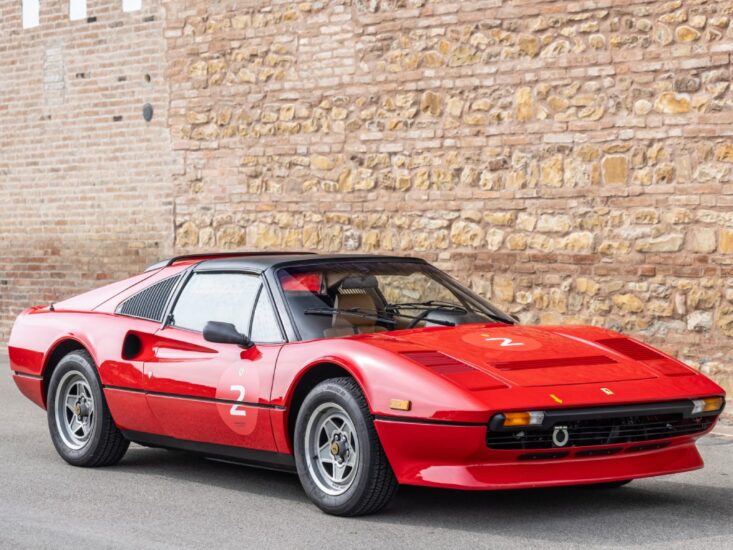
The 308 GTB/GTS followed a couple of years after the Bertone-designed, four-seater Dino 308 GT4, which debuted the quad-cam 3.0-litre V8 that would become the foundation pillar for much of Ferrari’s success from that point on.
Outputs of 255hp and 283Nm eked out by Euro-spec, carburettor-fed 308s are hardly earth-shattering by today’s standards, but not too shabby considering early examples of the 308 clothed in fibreglass bodies – Vetroresina in Italian – had a dry weight of just 1050kg. Not many of these were made, so the cars we’re driving today are clad in steel bodies, adding 150kg to their overall mass.
Clambering into the mid-1970s Ferrari, there’s the immediate realisation that the 308’s driving position is far from ideal, as is the case with pretty much any pre-1990s Italian exotic.
If you set the seat up to be the right distance from the pedals, you find that reaching the steering wheel requires a stretch. Given that there’s no power assistance, you need to really activate your shoulder muscles to get the car rotated through tight corners.
The transversely mounted 3.0-litre quad-cam V8 is fed by a quartet of twin-choke Weber carburettors, and the induction roar under throttle is enough to make the hairs on the back of your neck stand on end. If you close your eyes, you can almost imagine it’s a Ford Escort BDA rally car at full noise.
It takes a brief period of familiarisation to get to grips with the 308 (I drive both a GTB and targa-roofed GTS) but once this is done, there’s the discovery that it’s a light-footed and well-balanced car, even though the heavy steering means you need to expend some elbow grease to get the car dancing.
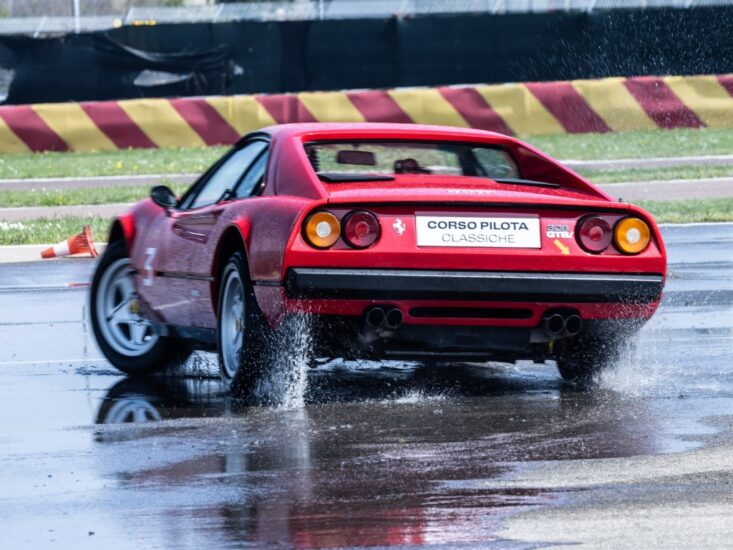
Mastering the gated-shift manual is an art, but once done, there’s tremendous satisfaction in rapidly clack-clacking up and down the gears. Downshifts are best done with a heel-toe blip on the throttle to smoothly slot home the lower cog.
Get in sync with the 308 and you’ll find it’s a remarkably capable and rewarding driver’s car for a vehicle that’s almost half a century old. Granted, a 2024-spec Volkswagen Golf GTI would outpace the venerable Ferrari around a racetrack or across a challenging mountain road, but it would be devoid of the engagement and visceral thrills of manhandling the mid-engined masterpiece.
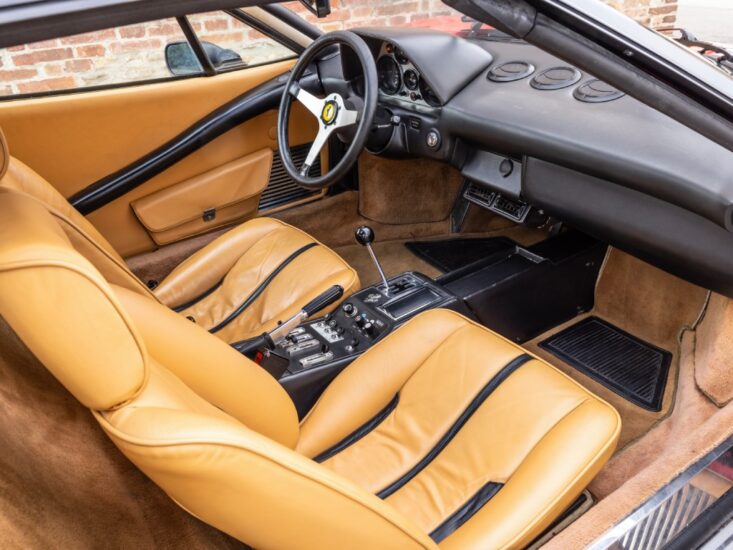
Needless to say, Ferrari 308s aren’t cheap to acquire these days, but not completely out of reach either, as you might be lucky enough to find one for Dh350-400k. That said, a pristine fibreglass-bodied 308 (Vetroresina) could cost you double that.
Ferrari 550 Maranello (1996-2002)
The 550 Maranello marked a change of tack for Ferrari as it was the marque’s first front-engined, two-seater V12 model since the 365 GTB/4 Daytona, which went out of production more than two decades earlier.
From 1973 to 1996, the role of Ferrari’s two-seater flagship model was borne by firstly the Berlinetta Boxer and then the Testarossa, both of which had mid-mounted flat-12 engines.
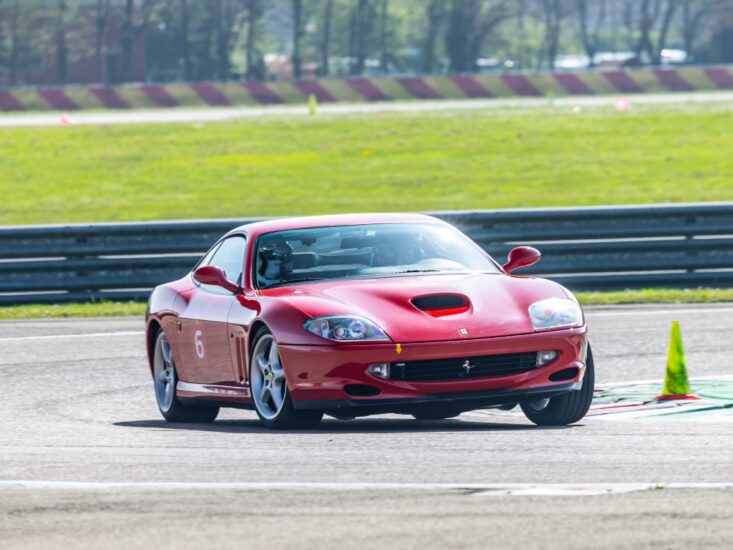
Not only was the 550 Maranello the polar opposite of its Testarossa predecessor in its powertrain layout, but it also diverged stylistically. Where the Testarossa was all sharp edges and side strakes, the 550 Maranello marked a return to classic Ferrari design language, with graceful curves as the prominent theme.
Housed under its pointy snout was a turbine-smooth 5.5-litre V12 that eked out 485hp at 7,000rpm and 569Nm at 5,000rpm. Weighing in at 1,774kg, the 550 Maranello sprinted from 0-100km/h in 4.4sec and topped out at almost 320km/h, so it was among the fastest cars of its era.
Unlike the two other Ferraris I’m sampling today, the 550 Maranello is equipped with power steering and its well-appointed cabin is much more ergonomically sound than the living quarters of the 308 and Daytona.
The only letdown is that its interior ambience isn’t befitting a car that sat at the top of Ferrari’s hierarchy in its day. The dashboard is a bit plasticky, and the plethora of off-the-shelf knobs and switches look and feel a bit cheap. This car was obviously made before Ferrari had cottoned on to the value of creating bespoke, high-quality cabins for its offerings.
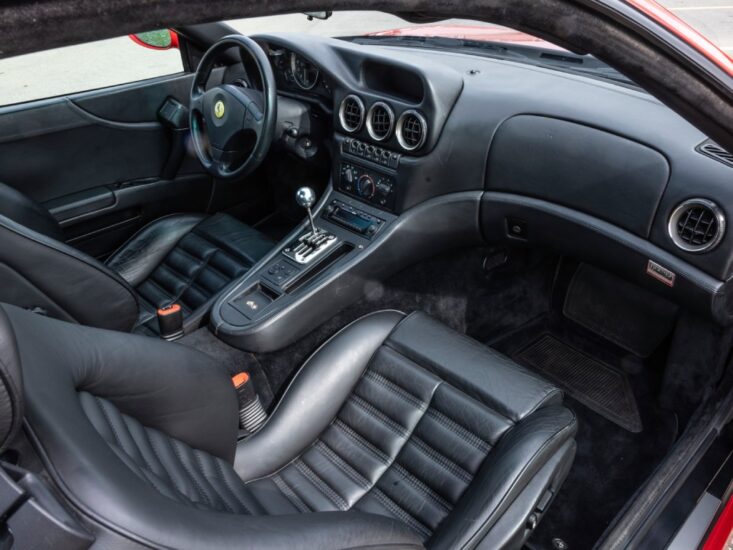
Any misgivings about the 550 are soon dispelled as the car is both easy and pleasurable to hustle around the Fiorano track. The crisp and accurate power steering enables the car’s trajectory to be controlled with the wrists and forearms, rather than having to muscle it around with the shoulders, and the gated six-speed manual is also a slick-shifting delight.
The 550 Maranello wouldn’t see which way an 812 Superfast went around Fiorano, but it’s still potent and grippy enough to make it an enjoyably brisk driver’s car by today’s standards. Crucially, the 550 and the updated 575 Modificata were realistically the last Ferrari V12s to be offered with a manual gearbox, as only 30 units of the subsequent 599 Fiorano were built with three pedals.
All in all, the 550 Maranello is an immensely likeable car, and its supple ride and effortless loping stride would have made it the ideal long-distance continent crusher in its day.
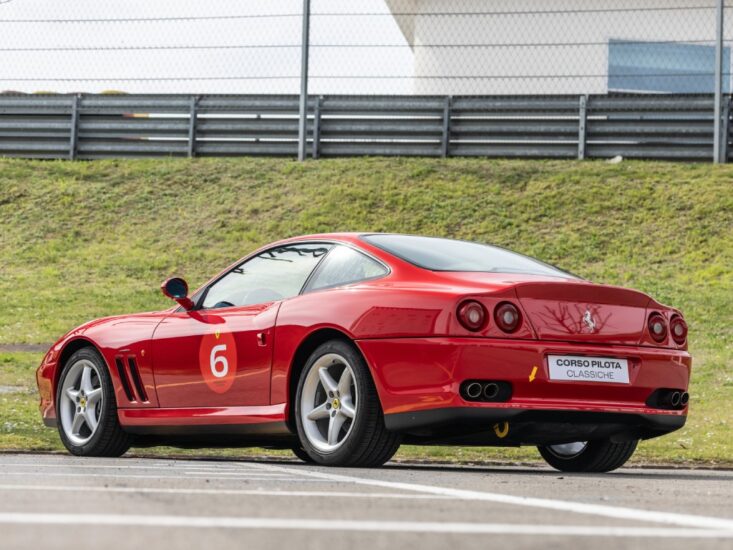
Resale values of 550 Maranellos have held up quite well and you’d have to part with well over Dh600k to score a clean, well-maintained example in today’s market.
FLAWED GEMS
Drive virtually any classic and you’ll find they’re compromised in one way or another. We’ve been softened up by modern cars that nail a whole bunch of metrics in terms of performance, refinement, ergonomics and safety. It’s often hard to find any meaningful faults with many of today’s sportscars/supercars.
That’s part of the charm of driving these yesteryear jewels from the Ferrari catalogue, which are pure analogue and have shortcomings. They demand something from you as a driver as they don’t deliver dumbed-down dynamics designed to flatter ham-fisted pilots.
Getting the best out of these venerable Ferraris requires you to activate a part of the brain that has become dormant. And that’s an immensely joyful and rewarding experience.






















There are no comments. Be the first!